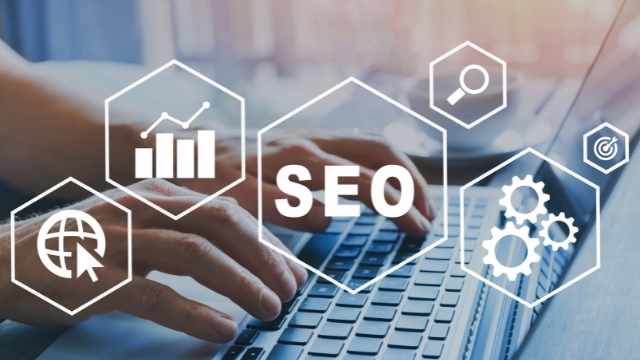What is On-Site SEO?
On-site Search Engine Optimization (SEO) is a process of optimizing the content and structure of a website in order to improve its visibility in search engine results. It is important to optimize the elements on a website in order to ensure that it ranks higher on search engine results pages. On-site SEO involves optimizing aspects such as title tags, meta descriptions, headings, and content. Additionally, improving the loading speed, interlinking between pages, and using keywords strategically can help improve the overall ranking of a website. Optimizing websites for search engines is an essential step in any digital marketing strategy in order to reach the right target audience.
What are the benefits of On-Site SEO?
On-site SEO can help businesses maximize their online visibility and presence. By optimizing website content, structure and code, businesses can increase their organic search rankings and drive more traffic to their website. With on-site SEO, businesses can also ensure their website is running smoothly, quickly and efficiently, helping to improve user experience and reduce bounce rates. Additionally, on-site SEO can help businesses keep up with the latest search engine algorithms and trends, allowing them to stay ahead of the competition. Overall, investing in on-site SEO can be a great way for businesses to boost their online presence and gain an edge in the digital world.
1: Increased visibility on search engine result pages (SERPs)
On-site SEO is powerful for optimizing visibility on search engine result pages. By utilizing best practices such as keyword research, content creation, and link building, businesses can increase their presence on SERPs and drive more organic traffic to their sites. Additionally, on-site SEO can help to improve user experience, as it can ensure that webpages are properly indexed and ranked in order to provide the most relevant search results to users. With a comprehensive on-site SEO strategy, businesses can improve their visibility on SERPs and increase organic traffic to their website.
2: Improved user experience
On-site SEO is a great way to improve user experience, allowing businesses to optimize their website for better visibility and improved ranking in search engine results. This can be achieved through optimizing page titles, meta descriptions, and content for relevancy to target keywords. Additionally, on-site SEO practices such as optimization of internal links and site structure can help users easily navigate to the content they are looking for. By improving user experience with on-site SEO, businesses can increase their visibility and grow their customer base.
3: Increased website speed and performance
On-site SEO can be powerful for improving website speed and performance. Through the implementation of various strategies such as optimizing page load times, compressing images, and caching content, website owners can significantly improve their website’s loading speed and overall performance. By improving the user experience through faster page loading speeds, websites can increase engagement and lead to better ranking in search engine results. On-site SEO is an effective way to improve website speed and performance, resulting in better user experience and higher rankings.
4: Improved website structure for better navigability and indexing
Improving website structure can have a major positive impact on search engine optimization (SEO). Structuring a website in a way that is organized and easy for search engine bots to crawl and index can lead to higher website rankings and more organic traffic. On-site SEO measures such as improved navigability, better page titles and descriptions, and the use of structured data can help create an optimized website structure that will be beneficial for both users and search engines.
5: Enhanced page titles, URLs, and meta descriptions for higher click-through rates (CTRs)
On-site SEO practices are essential for a website to achieve higher click-through rates (CTRs) for their web pages. One key practice is optimizing page titles, URLs, and meta descriptions. A descriptive page title can draw more attention from search engine users, while optimized URLs can make it easier for search engines to crawl the page. Additionally, well-crafted meta descriptions can provide an enticing summary of a page’s content, further increasing CTRs. Taking the time to properly optimize these elements can make a huge difference in a website’s traffic and ranking in search engine results pages.
6: Better keyword usage and optimization
Proper keyword usage and optimization can help to improve a website’s search engine rankings, making it easier for customers to find your business online. There are several key factors to consider when utilizing on-site SEO, such as using relevant keywords, optimizing page titles and meta descriptions, and ensuring the site is properly structured and formatted. Taking the time to research and understand the best practices for keyword usage and optimization will ensure that your website is more visible to potential customers.
7: Improved internal link architecture
The internal link architecture of a website plays an important role in its on-site SEO efforts. When improved, it makes it easier for search engine spiders to crawl and index the site, while also helping to improve the overall user experience. Additionally, good internal link architecture can help to boost the rankings of individual pages and make content more accessible to users. Improving internal link architecture is a crucial step in any successful on-site SEO strategy.
8: More effective content optimization
Content optimization is a key aspect of on-site SEO, as it allows websites to rank higher in search engine results. By optimizing content with targeted keywords and phrases, websites can better reach their target audience and increase visibility. Improving content optimization is an effective way of increasing website traffic and improving overall search engine rankings. By understanding the importance of content optimization, businesses can better position themselves for success in the digital age.
